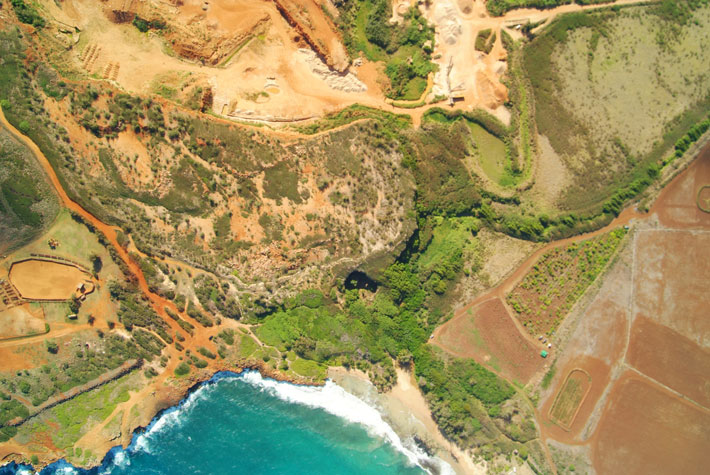Anthropology
Related: About this forumLetter From Hawaii: Inside Kauai's Past
Letter From Hawaii
Inside Kauai's Past
Ideal conditions within an ancient cave system are revealing a rich history that reaches back to a time before humans settled the island and extends to the present day
By ANDREW LAWLER
Friday, April 03, 2015
On a recent winter day, Burney is shin-deep in the tar-black ooze at the bottom of one of the excavation pits. He typically locates them at the periphery of the sinkhole, against the cave’s walls, where the stratigraphy is clearer. He motions to me to clamber down a 20-foot aluminum ladder and gives me a history lesson as I descend. After the first few rungs, I leave behind the period after Captain James Cook landed on Kauai in January 1778, the first European known to have visited Hawaii. Plastic, glass, and metal artifacts abruptly cease and are replaced by giant boulders, gravel, and sand in the level below, dated to about four or five centuries ago, unmistakable signs of an enormous tsunami which Burney and his colleagues believe originated from a massive earthquake in the eastern Aleutian Islands. This event, no doubt a catastrophe for the people living on the Kauai coast, deposited a great deal of debris and sealed off the prehistoric layers deposited in the cave from those of the later era of Western contact, leaving the material below undisturbed and uncontaminated.

[font size=1]
(Courtesy Ellen Coloumbe/Wings over Kauai)
An aerial view of the ecological reserve in which Makauwahi Cave is located
[/font]
Natives and tourists had long known about Makauwahi Cave, but it was Burney who, in August 1992, first grasped its significance for understanding Hawaii’s long and varied history, when he, Lida, and researchers Storrs Olson and Helen James from the Smithsonian Institution stumbled on the site while on vacation. At the time, the Burneys were at New York’s Fordham University and had a keen interest in ecological history and paleontology. One afternoon, while walking on a nearby beach, Burney spotted fresh footprints that appeared to lead into the brush. Curious but cautious, he followed the prints to a small hole at the foot of a cliff, just big enough to crawl through. Inside, he found himself within a giant oval bowl, but he couldn’t see much else through the dense growth and the afternoon’s lengthening shadows.
The next morning, before the sun had reached the interior, the two couples were back with a bucket augur, a small hand-powered drill that can pull material up from below ground, making only a small puncture in the surface, not greatly disturbing the site. The first bore went down 10 feet, and Burney found three species of extinct land snails, important indicators of ancient environmental conditions. In the second sample was a small bird skull. “If you got that much good stuff by drilling two small holes, then I couldn’t imagine what was waiting,” he says. “I’ve spent much of my life looking for two things—lakes and caves that have fossils in them,” says the peripatetic scientist, who had flitted in this pursuit from the North Carolina sounds to the Serengeti plains to the jungles of Madagascar before moving to Kauai to devote himself to studying Makauwahi Cave. “If you can find a lake inside a cave, it’s more than twice as good because you get the benefit of both types of fossil-forming environments.”
At Makauwahi, the conditions are remarkable. The alkaline limestone and the acidic groundwater cancel each other out and create the perfect neutral pH. “This is the Goldilocks zone—just right,” he says. “Everything in here is preserved. It’s like pages in a diary. And this process has been operating for thousands of years.” An acidic environment would have destroyed bones, while an alkaline environment would have destroyed plant fossils. But here, not just animal fossils, but also shells, seeds, leaves, and wood, as well as billions of microscopic algae, pollen, and spores are embedded in the layers that extend as far as 33 feet deep to the sinkhole’s floor.
More:
http://archaeology.org/issues/177-1505/letter-from/3144-letter-from-hawaii-kauai-caves